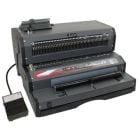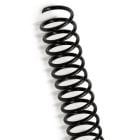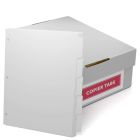Creating a User Manual For Your Product
Now that you are ready to put your great product out in the world, you'll need to tell your customers how to use it. Here are some tips to get you started.
New Eyes:
Although you know your product inside and out, you have to keep in mind that it may well be brand new to your audience. To that end, you are going to have to pretend that you are a newbie to your item. Use your product as they would, and write down everything that comes to mind when you are doing it. Some aspects, for instance may be more difficult that others, and though you have long since figured out the process, may take more effort for the novice. Make lots of notes as you are examining and using
your product as if for the first time.
Another thing you can do is to enlist the help of some friends or family members who have not used the product before and get some ideas from them about some of the aspects of your item that seem especially challenging or that entail a bit of a learning curve. The more information you can get from them, the better chance you have of creating a user manual that is clear and effective.
Know Your Audience:
You have probably done a lot of research regarding the target market for your product, so you have some sort of idea who is going to be reading the manual. Though there is a growing movement to use hip and happening language in user manuals that are targeted to a younger audience, you don't want to do this at the expense of creating a useful manual. In many cases, it is also relatively safe to presuppose that there is some prior knowledge of your product or line of products or of similar items. In these cases you don't want to assume too much. Feel free to explain, at least a little bit, what you think someone who has just discovered your product and line should know.
Writing:
As with most kinds of writing, creating a great user manual starts with making an outline. Start with headers, move to subheaders and fill in what you need to from there. Make sure that the most important parts of the process of using your product are included, and make sure to include as many scenarios as are reasonable.
Keep in mind that there are a lot of people out there who learn much better by seeing rather than hearing or reading. Drawings and photographs can go along way in making your user manual something that will be truly effective for the most people.
Testing and Editing:
Before printing, have a group of people go over your user manual while using your product to see how it all works. Make edits base on what you find out from these users.
Binding:
You will want to have an online version of your user manual in PDF form. You should also give some thought to how you want to bind your manual. Spiral coil, for instance, gives you a book that is both strong and hands-free functional. You can bind your own booklets fairly cheaply as the machines are inexpensive and easy to use.









